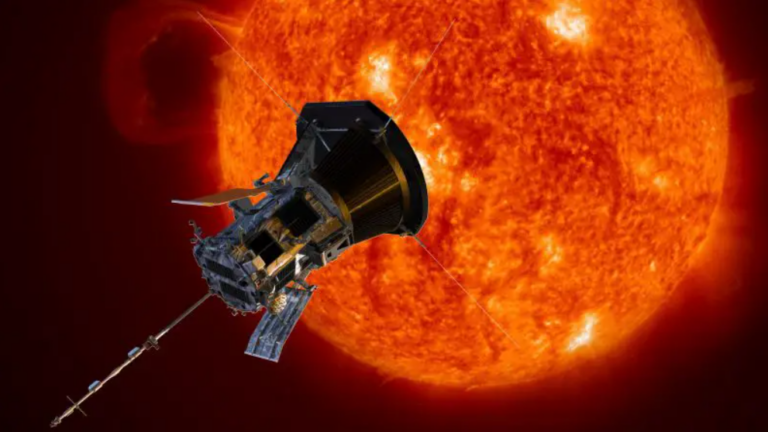In 2024, a NASA probe is scheduled to reach speeds of 435,000 mph as it approaches the Sun.
NASA is preparing for another ambitious mission with its Parker Solar Probe, scheduled to approach the Sun once again in late 2024.
In this upcoming rendezvous, the probe will efficiently traverse through the Sun’s outer atmosphere, also known as the corona.
Just like how missions to the moon offered valuable information about its history and formation, the detailed examination of the Sun’s elements, sometimes described as “reaching out” to the Sun, is crucial for understanding our star and its influence on the entire solar system.
In December 2021, NASA made a groundbreaking announcement that a spacecraft had successfully reached the Sun’s corona for the first time. This achievement signifies a significant advancement in solar science, as the probe collected crucial data on charged particles and magnetic fields.
According to the BBC, the spacecraft is expected to navigate the harsh environment near the Sun in 2024 at an impressive speed of 195 km/s or 435,000 mph.
During its flyby in 2024, the probe is set to come within 3.9 million miles of the Sun’s surface, closer than even the planet Mercury. The Sun’s strong gravitational pull will assist the probe in achieving this high velocity.
Equipped with sturdy heat shields, the probe was launched in 2018 with the goal of conducting close passes of the Sun. This mission enables the direct study of solar material, including charged particles and magnetic fields, offering scientists unprecedented insights into the Sun’s behavior.
By orbiting closer to the solar surface, Parker may uncover valuable information about phenomena like solar wind, which impacts all planets, including Earth.
Other solar missions positioned farther away may face challenges in gathering essential data, as they are too distant to observe such details.
The $1.5 billion probe is outfitted with carbon-composite shields that are four inches thick, designed to endure the extreme heat levels. These shields play a crucial role in protecting the probe and its scientific instruments during perihelion, the closest point to the star in the probe’s orbit. It is projected that temperatures on the front of the spacecraft could rise to approximately 1,400°C during this phase.
Parker’s mission strategy focuses on rapid entry and exit, enabling the gathering of data on the solar environment through a set of instruments. This unique approach shows potential in uncovering the enigmas surrounding the various mechanisms that regulate the Sun. One of these mysteries is the phenomenon of superheating in the corona.
The corona displays a puzzling superheating effect. Despite the Sun’s photosphere having a temperature of about 6,000°C, temperatures within the corona can escalate to over a million degrees and even higher.
Do not forget to share your opinion with us to provide you with the best posts !




0 Comments